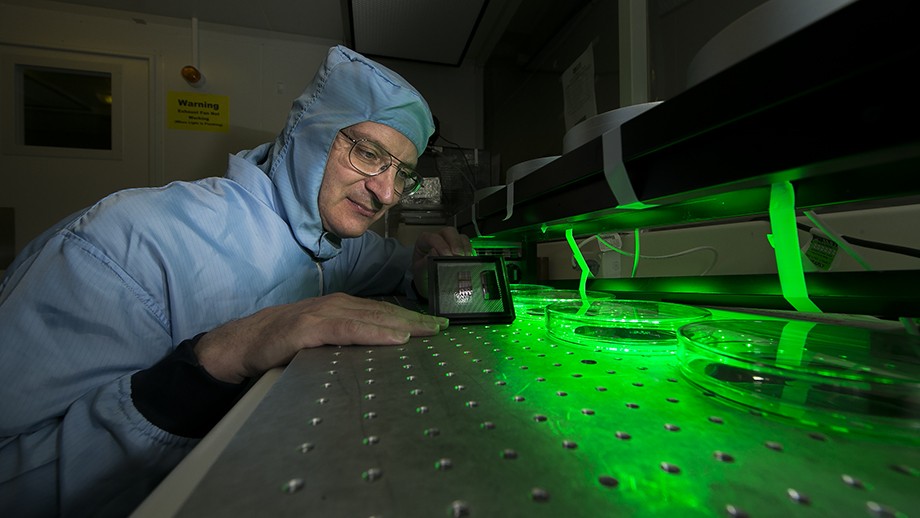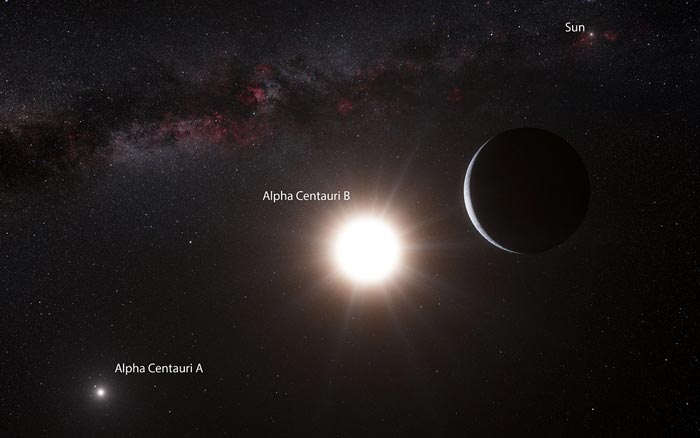Australians have developed an optical chip for telescopes, allowing you to see the dim exoplanets

Astronomers have been studying exoplanets for several years. From the moment their discovery was made possible thanks to the Kepler space telescope, scientists have discovered several thousand exoplanets, some of which may well be earth-like, with liquid water and a dense atmosphere. Unfortunately, a more detailed study of exoplanets is not yet possible, since their remoteness makes the work of specialists very difficult.
In order to evaluate the characteristics of an exoplanet, it is necessary to separate the “grains from the chaff,” or rather, somehow remove the light of the star so that the planet can be better seen. Researchers from Australia have discovered a way to make a star's light filter more reliable and selective.
The new development is a specific kind of optical chip. This chip can be used to improve the capabilities of existing telescopes - you do not need to create new types of telescopes to work with the new product. The chip developer, Professor Steve Madden claims that it uses technology that can be compared with active noise reduction in headphones. In the case of passive suppression, we are talking about the banal isolation of acoustic waves. But in the case of active noise reduction, acoustic interference is used.
This method does not work very effectively if, for example, a child is crying nearby. But here is the uniform background noise from running servers or the engine headphones with such a system clean perfectly. Sound is a P-wave, which consists of two stages: compression and rarefaction. A noise canceling speaker emits a sound wave with the same amplitude, but with an inverted phase (antiphase) of the original sound. Waves in the process of interference mix into a new wave and suppress each other.

Professor Steve Madden oversees the chip
The new chip works on a similar principle, only here it is not the sound that is cut off, but the light emitted by the star. “This chip is an optical interferometer that emits waves with the same amplitude as a star, but with the opposite phase, allowing you to see much less bright planets,” says the Australian.
You can use the new chip not only to search for exoplanets. It can also be used to study and classify such objects with an eye to detailed study in the future. Such a chip, for example, can provide a qualitative study of the chemical composition of the atmosphere of planets that are very far from us. All that needs to be done is to cut off the optical noise of stars and objects that are between us and the exoplanet under study.
Harry-Dean Kenchington Goldsmith. A member of the chip development team, who proposed the idea itself, says that the technology used in the system works in a similar way to thermal imagers that firefighters use to be able to see through smoke. “The chip uses the thermal radiation emitted by the planet so that scientists have the opportunity to see its surface through the clouds in a dense atmosphere. In the end, the developers are sure, this technology will help us detect ozone on alien planets that can support life, ”Goldsmith said.

The search for earth-like exoplanets, the conditions on which are suitable for the existence of life, is an important task. Scientists have been discussing this task for a long time, trying to find new methods for searching for objects remote from us and criteria for their assessment. Interestingly, scientists do not yet have evidence that α Centauri A and α Centauri B have planets in the habitable zone. Perhaps such planets exist, but no one is sure of this. It is well known that α Centauri B has a planet, which, however, is located very close to the star. So, most likely, this is a hot world, located outside the habitable zone of its star, on which there is no life. An exoplanet was discovered by the Kepler telescope in 2012.
One of the methods for a detailed study of potentially inhabited planets is through specialized telescopes. A team of scientists is working on the Project Blue project , planning to launch a small optical telescope into Earth’s orbit. He will be able to observe the exoplanets of the stellar system closest to man. But for each exoplanet such a telescope is hardly possible. But the optical chip is universal.
